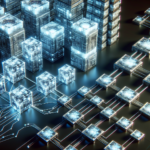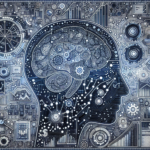The Concept of RWA Tokenization
Understanding Real-World Assets
Real-world assets (RWA) encompass tangible and identifiable items such as real estate, art, commodities, and intellectual property. These assets are fundamental to the economy but are often restricted by traditional systems of ownership, including high barriers to entry and limited liquidity. Tokenization refers to the process of creating a digital representation of these assets on a blockchain, which can provide significant benefits in terms of accessibility and trading efficiency.
Why Tokenization Matters
Tokenization of RWAs introduces a myriad of advantages. It democratizes access to investments, making it easier for individuals to own a fraction of high-value assets. Moreover, it enhances liquidity, allowing assets to be traded more freely compared to traditional frameworks. This becomes particularly beneficial in markets like real estate, where buying and selling properties often involves lengthy and cumbersome processes.
The Technology Underpinning RWA Tokenization
Blockchain Basics
At its core, RWA tokenization relies on blockchain technology. A blockchain is a decentralized, distributed ledger that records transactions across many computers. Once a transaction is recorded, it cannot be altered, providing a high degree of security and transparency. This is crucial for RWAs, where trust and verification of ownership are paramount.
Smart Contracts: The Backbone of Tokenization
Smart contracts are self-executing contracts with the terms of the agreement directly written into code. In the context of RWA tokenization, smart contracts can automatically enforce agreements without the need for intermediaries. For instance, they can regulate the transfer of ownership of an asset upon payment completion, streamlining the transaction process.
Token Standards and Protocols
Different blockchain platforms offer varying standards and protocols for token creation. For example, Ethereum’s ERC-20 and ERC-721 standards are widely acknowledged:
ERC-20 Tokens
These tokens are fungible, meaning each token is identical and can be replaced with another. This standard is generally used for assets like currencies and shares, making it useful for a wide range of applications in RWA tokenization.
ERC-721 Tokens
In contrast, ERC-721 tokens are non-fungible, meaning each token is unique. This is particularly beneficial for assets like art or collectibles, where individual characteristics matter. With ERC-721 tokens, it’s possible to represent ownership of distinct items on the blockchain.
The Tokenization Process
Asset Identification and Valuation
The first step in tokenizing an RWA is identifying and evaluating the asset. This process often requires collaboration between asset owners, legal professionals, and blockchain developers to ensure that the asset’s legitimacy is verified and valued accurately. Accurate valuation is critical, as it dictates the initial price at which tokens representing the asset can be sold.
Legal Considerations and Compliance
Tokenizing RWAs is not merely a technological challenge; it also poses legal and regulatory hurdles. Each jurisdiction has its own set of laws governing asset ownership and securities. To ensure compliance, it’s essential to work with legal experts who understand both blockchain technology and the pertinent regulations governing asset classes.
Creating a Digital Twin
Once the asset has been evaluated and legal compliance confirmed, a “digital twin” of the asset is created. This digital representation exists on the blockchain as a token, complete with smart contract functionalities. This allows for the mapping of ownership and transfer mechanisms directly linked to real-world changes.
Issuing Tokens
The actual token issuance process can vary based on the chosen platform and protocol. Tokens are typically offered through Initial Coin Offerings (ICOs), Security Token Offerings (STOs), or token sales. Each method has its own implications for regulatory compliance and investor protections, and it is crucial to choose the most suitable route based on the asset type and target market.
The Trading and Liquidity of RWA Tokens
Marketplaces for RWA Tokens
Once the tokens are issued, they can be traded on various digital asset exchanges. Several platforms specialize in RWA token trading, providing liquidity and enabling token holders to buy or sell. Off-chain mechanisms, traditional financial institutions, and blockchain exchanges can facilitate this trading.
Fractional Ownership
With the tokenization of RWAs, it is now possible to own fractions of high-value assets. For example, rather than purchasing an entire property, several investors can hold tokens representing shared ownership. This fractional ownership not only reduces entry costs but also spreads risk among multiple investors.
Challenges and Considerations in RWA Tokenization
Technological Risks
While blockchain brings transparency and security, it is not without risks. Issues like smart contract vulnerabilities and blockchain network reliability can pose significant challenges. Engaging in thorough testing, audits, and risk assessments is essential for mitigating these risks.
Regulatory Landscape
Navigating the regulatory landscape can be complex. As governments and regulatory bodies around the world continue to develop frameworks for digital asset trading, staying updated on compliance is vital. Token issuers and platforms must adapt to changing regulations, ensuring that their operations remain legitimate and sustainable.
Market Acceptance
For RWA tokenization to reach its full potential, market acceptance by traditional investors is crucial. Education and outreach are necessary to inform and reassure potential investors about the benefits and risks associated with RWA tokens. As understanding grows, market demand will likely follow suit, further legitimizing this innovative approach.
Future Implications of RWA Tokenization
Decentralized Finance (DeFi) Integration
The rise of decentralized finance (DeFi) creates exciting opportunities for RWA tokenization. By integrating RWAs into DeFi platforms, token holders can leverage their assets for lending, borrowing, and earning interest. This could significantly enhance the liquidity and utility of tokenized assets, opening new avenues for investors.
Impact on Traditional Finance
RWA tokenization has the potential to disrupt traditional financial services by reducing costs and inefficiencies associated with asset transactions. By leapfrogging traditional methods through blockchain technology, this shift could lead to a more inclusive financial ecosystem, where access to high-value assets is democratized.
Universal Application Across Asset Classes
As the technology matures, we can expect the application of RWA tokenization to expand beyond real estate and art to encompass more diverse asset classes, including commodities and even intellectual property. This broad applicability could revolutionize numerous industries and reshape how assets are bought, sold, and experienced around the globe.








